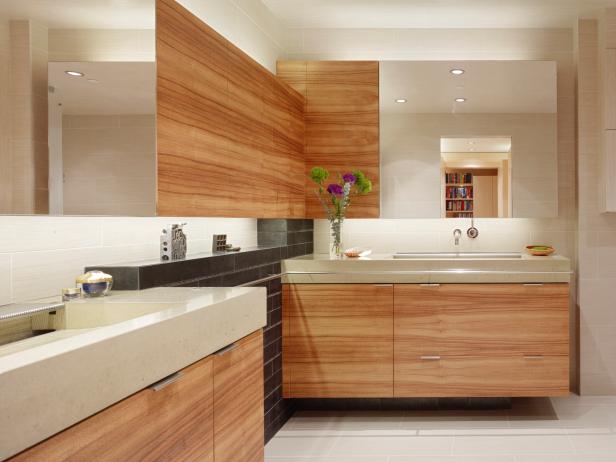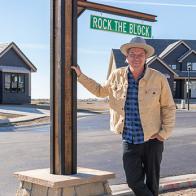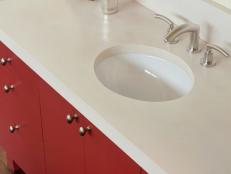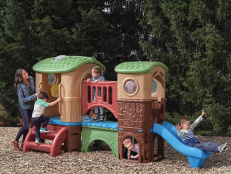Concrete Countertops

Matthew Millman
Don't let the name fool you: Concrete countertops are gaining popularity in bathrooms for a variety of reasons — and they bear no resemblance to sidewalks. Composed of cement, sand, water, stone, pigment and reinforcement fibers, concrete can be formed into flowing shapes and finished with a variety of coatings, from rustic to polished.
Concrete countertops offer glass-like smoothness and exciting design details. It features the warmth of stone and is completely customizable. Hues range from earthy to vivid. Surprisingly smooth and stylish, the surface complements contemporary or traditional looks, and its appearance improves with age. Consider these factors when choosing concrete:
- Measurements: Standard thickness is an inch and a half, but thicker countertops can be created. Overhang is generally half inch for standard cabinets and three quarter inch for flush cabinets. Choose from standard, return or formed edges.
- Types: Precast concrete is formed from a template and installed the same way as stone, and cast-in-place countertops are poured directly on the cabinets.
- Colors: Many people prefer earthy hues in the bath to produce a spa-like sanctuary, but brighter shades are also available.
- Inlays: For added pizzazz, flat objects such as seashells and coins can be embedded in the countertop. Many homeowners choose to incorporate objects that are especially meaningful.
- Finish: Choose from a few finishes. A troweled finish is all one color and features slight variations from the trowel. A veined or pressed finish offers marble-like veining and may include multiple colors. A ground finish requires grinding the troweled surface to reveal the aggregate.
- Practicality: Smooth and strong concrete is a smart choice for busy baths. The sealant makes it water resistant, but standing water should not be left for long periods. Regular maintenance is necessary.
- Sink Types: Options include integrated, drop-in, undermount and vessel styles.
Considering precast concrete countertops? Here's what the process entails.
- Template: The artisan you choose will make a template in your bath and bring it back to the fabrication site. This template is used to produce the mold into which concrete is poured.
- Creation: The artisan adds reinforcement (such as rebar and screens) to prevent cracking and incorporates design details—including any colors and inlays. The concrete is poured. The specially designed casting tables ensure uniform thickness and smoothness.
- Finishing: The concrete is cured, ground and polished (if desired), sealed and waxed.
- Installation: The artisan carefully transports the countertop to your bath for installation. Concrete countertops are installed in a manner similar to stone slabs.
- Budget Considerations: A customized concrete countertop is an investment. Many artisans offer a base price that goes up based on several considerations, including custom color, edge profile, shape, integral sinks, imbeds and templating, delivery and installation.






































